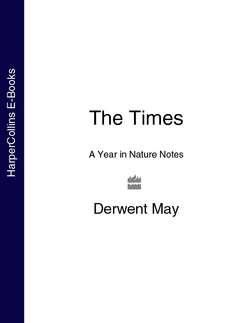Читать книгу The Times A Year in Nature Notes - Derwent May - Страница 53
16th February
ОглавлениеBY NOW, ALDER trees at the edge of rivers have catkins that are changing from hard little sausages to soft, loose-hanging lengths like coloured curtain cord. As they grow longer, and the pollen swells in them, the catkins become a mottled crimson and yellow. Also in the alder branches there are many small black cones. The seed has mostly fallen out of them by now, but siskins, goldfinches and lesser redpolls are teasing out any remaining seeds with their well-adapted narrow beaks.
Ivy is still providing food for birds. The large black berries go on ripening until it is almost spring, and blackbirds sit in the middle of the thick creeper gobbling them up.
Out in the fields, a loud, whistling ‘whee-oo’ rings across the springing corn from fieldside trees. This is the sound of a courting little owl. Little owls, which are natives of the Continent, were introduced here in the 19th century and are now found all over Britain except in the north of Scotland. They are about in the daytime far more than tawny owls. They bob up and down on a low branch or field gate as they scrutinise the ground for prey.
